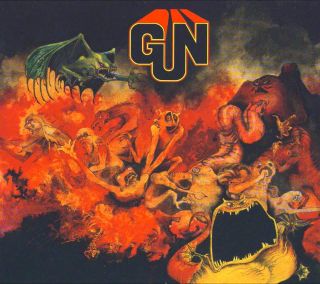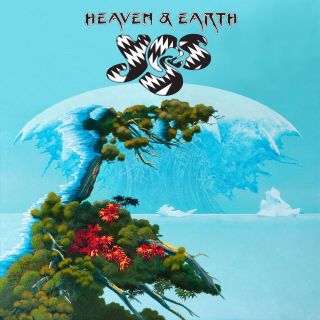Roger Dean holds strong opinions about how his art is represented and displayed. Dean’s main concern for the past few years has been that his artwork is reproduced with the integrity with which it was originally created.
“For 10 years Atlantic issued Close To The Edge [by Yes] without the painting from the middle of the original gatefold sleeve. How cheap can that be to do? One tenth of a cent? It shows such contempt for the customer. They are not being responsible guardians of the music. That doesn’t mean to say that I feel that way about the small [CD] format though. On the contrary, when they do it properly, it gives me as much satisfaction as the bigger sleeve. I like the small format if it’s done with care and attention.”
There is currently a trend, especially in Japan, to reproduce CDs in miniaturised five-inch square replicas of their original LP jackets, something Roger evidently approves of.
“The quality of those are all there, there’s nothing that’s been chucked out. It’s small, but it’s solid value.”

For someone who paints on such a large scale, doesn’t Roger find CDs disappointing in terms of the size the artwork is reproduced?
“I used to collect stamps as a kid,” he says, “and they’re really tiny. If the label has taken care, and as much love and attention has gone into producing the small format, then I’m all for it. Right now we’ve got a publisher who’s going to republish [his book] Views, and they said to me would I be interested in making the format the same size of a CD, because when I did the books originally they were the same size as an LP. I thought, ‘Neat – I can put it in my pocket!’.”
- Buyer's Guide: Yes
- The Story Behind The Song: Heat Of The Moment by Asia
- Rick Wakeman; "The on ice thing was an accident, but never a problem"
- The Story Behind Jon Anderson's debut solo album Olias Of Sunhillow
And does downloading worry him?
“Music is essentially abstract. You can’t hold it. You can hold a vinyl album because that is how the music’s been stored. That in itself is nothing more than the access and storage mechanism. So how music is stored is irrelevant, but when you package it, you make it a gift, and if the record company treated it as a gift, and then presented it to the public as a gift, it would then be treated as such. Your grandmother might buy you a CD or an LP for Christmas, but they’re not going to buy you a download, are they? How are you going to wrap a download? I think if it’s properly packaged, properly presented, you’ve taken an abstract thing and made into something tangible, because music makes a wonderful gift, but to make it a wonderful gift you have to package it with love and affection. While music has this role as a gift, the tangible version of it will always be critical.”
MASTER STROKES - FIVE NOTABLE ALBUM SLEEVES DESIGNED BY ROGER DEAN
The Gun - Gun (1968)
Dean’s first album cover

Yes - Fragile (1971)
Dean’s first work with yes, the band with whom he’s most associated

Uriah Heep - The Magician’s Birthday (1972)
One of Dean’s most recognisable and enigmatic works

Asia - Asia (1982)
Apart from one Yes cover, this was Dean’s first artwork in the 1980s for a new studio album, and showcased a slight shift in style

Yes - Heaven & Earth (2014)
Dean’s most recent album artwork, working for the band with whom he’s most closely aligned. This is his 25th cover for Yes, taking in studio, live and compilation albums

This article originally appeared in Classic Rock #108.
For more on Roger Dean and Yes and how they both grew through the 70s, then click on the link below.

